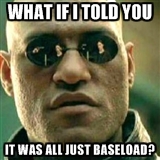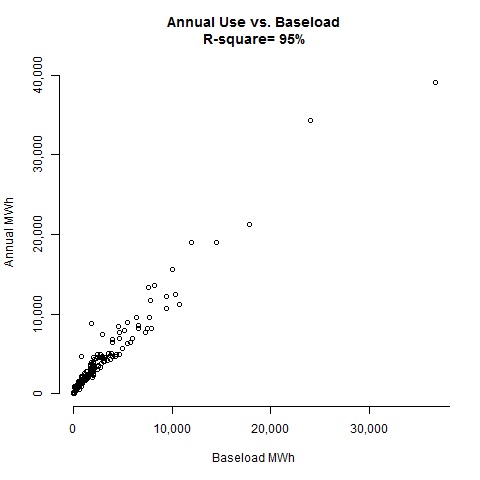Many buildings know their Energy Star score better than their home phone number. And as we discussed last month, Energy Star scores are complex, full of regressions, arguments about space allocations and subject to revisions.

You probably already know that baseload is a major factor in your energy use. After all, we don’t turn buildings off, we turn them down. Lease hours may be 9am to 5pm, but operating hours are often longer, for good reasons. But did you know that most buildings use more energy when closed than when open? Or that on average, baseload is about 70% of total energy use in buildings?
The graph below illuminates this relationship over hundreds of commercial buildings in California. The relationship is strong, over 95% of the variation in annual usage across buildings can be explained by just one number… and that number is baseload. Compare this with square footage, which only explains 23% of the variation in the same data set!

Managing baseload with Gridium is easy and automated. Gridium calculates baseload for each day as well as the time periods your building spent in baseload. Gridium’s Snapmeter tool easily and automatically tells building operators:
- If baseload is consistent each weeknight (its usually not)
- If baseload is the same on weekends and weeknights (almost never)
- If baseload has changed over time (it often varies)
So next time you get into a hair splitting debate about Energy Star numbers, why not take a peak at the one number that matters?
